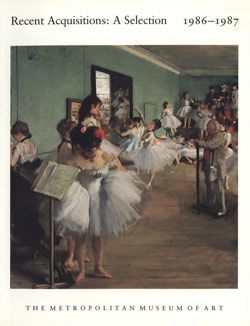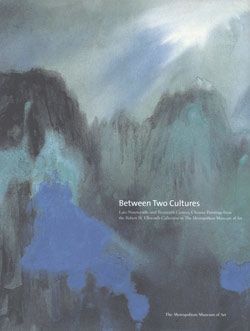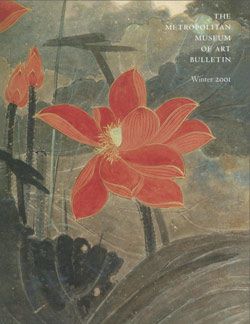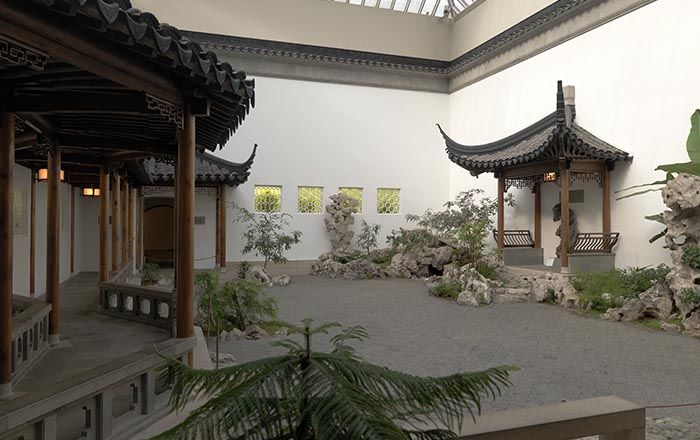Buddhist Sage
Wang Zhen Chinese
Not on view
A successful Shanghai businessman as well as a devout Buddhist, Wang Zhen is best known for his paintings of Buddhist figures in the calligraphic brush manner of his mentor, Wu Changshi (1844–1927). This large-scale work, made one year after his master's death, not only reveals Wang's devotion to Chan (Zen) Buddhism but may also refer to his role as Wu's disciple. The painting portrays the legendary Indian monk Bodhidharma, who is credited with introducing Chan Buddhism into China, and his Chinese disciple Huike, who cut off his arm to demonstrate his spiritual conviction and prove his worthiness to become a follower. Wang's use of rich colors and bold ink dots and slashes in his description of the landscape is typical of his teacher's style; the simplified outlines of his figures, however, may be inspired by the works of such Song- and Yuan-dynasty Chan painters as Liang Kai (active early 13th century) and Yintuoluo (active ca. 1340), whose paintings Wang could have seen on his business trips to Japan.
Wang's inscription reads:
A sage from the West
Preaches the miraculous doctrine of the Upper Vehicle.
Preaching, he sits under a bodhi tree,
With roosting birds listening in silence.
The Wheel of the Law is as bright as a full moon,
Its precious light illuminating the lamp of transmission.
Ailing worshipers travel from afar
To receive guidance from the monk at the stone cave.
(Wen C. Fong, trans., in Between Two Cultures: Late-Nineteenth and Early-Twentieth-Century Chinese Paintings from the Robert H. Ellsworth Collection in The Metropolitan Museum of Art [New York: The Metropolitan Museum of Art, 2001], pp. 76-77)
This image cannot be enlarged, viewed at full screen, or downloaded.
This artwork is meant to be viewed from right to left. Scroll left to view more.






